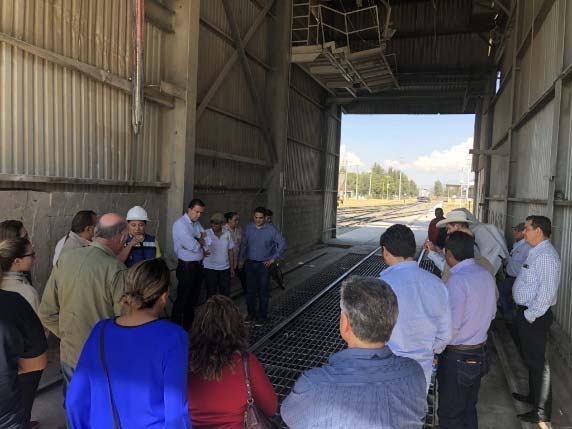Inefficiencies in discharging U.S. corn at the port of Guatemala added costs to importing grain from the United States. Guatemalan authorities required unnecessary fumigation on U.S. corn before discharging it from the vessel. This added a financial burden to grain importers and caused downstream costs associated with unnecessary storage and demurrage.
In response to this issue, the Latin America regional office of the U.S. Grains Council partnered with the main grains terminal in Guatemala, Terminal de Granos del Pacifico (TERPAC), to train a team of officials from the Guatemalan port about the U.S. export system, build a stronger relationship between the industry and Guatemalan regulators and ultimately reduce the need for fumigation of U.S. grain shipments upon arrival in Guatemala.
Guatemala is the largest importer of U.S. corn in Central America. In the 2020/2021 marketing year, the U.S. exported 1.2 million metric tons (MMT) (47 million bushels) of corn worth $297 million to Guatemala. Addressing the difficulties that end-users and importers face at the destination port improves overall efficiency and eliminates unnecessary costs that would otherwise result in food inflation for the consumer.
In late 2019, the Council hosted ten government officials and two TERPAC representatives on a trade facilitation mission to the United States. The team learned about the U.S. export system from the farmer through the export channels to the export elevators. Through each step of the export channel, the team learned about the quality assurance procedures in place. The program demonstrated the reliability and transparency of the marketing channel and the role of the government and independent surveyors in ensuring grain quality upon export.
Before the mission, TERPAC reported that Guatemalan authorities were reluctant to trust U.S. fumigation certificates, and there was also a breakdown in communications between private sector importers and government inspectors. However, after the program, the authorities became more willing to engage with their customers. Most importantly, the amount of grain subject to additional fumigation at the destination decreased. Cargo retained for fumigation at destination declined from 90 percent in 2019 to 25 percent in 2020 and five percent in 2021.
When additional fumigation is required, it adds 0.52 cents per metric ton to the final costs of importing. Work to reduce these costs translated to a savings of approximately $544,000 per year solely for corn imports. The Council invested $47,082 of Market Access Program (MAP) funds in the training program, resulting in a savings of $544,000 per year for its Guatemalan customers, which can be invested in expanding facilities or reducing costs for the Guatemalan consumer.
About The U.S. Grains Council
The U.S. Grains Council develops export markets for U.S. barley, corn, sorghum and related products including distiller’s dried grains with solubles (DDGS) and ethanol. With full-time presence in 28 locations, the Council operates programs in more than 50 countries and the European Union. The Council believes exports are vital to global economic development and to U.S. agriculture’s profitability. Detailed information about the Council and its programs is online at www.grains.org.

